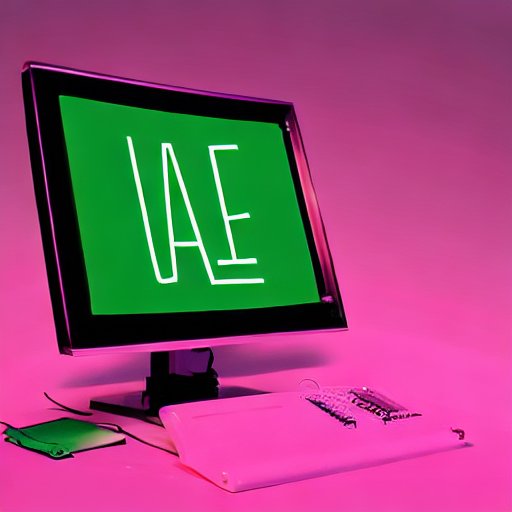Your cart is currently empty!
Category: Tech
-

TESLA’S VALUE DEPENDS ON GOVERNMENT SUBSIDIES
TESLA’S GOVERNMENT SUBSIDIES
Introduction
Tesla, the world’s leading electric vehicle (EV) manufacturer, has revolutionized the automotive industry with its innovative technology and ambitious vision. However, the company’s journey has been significantly influenced by government subsidies at the federal, state, and foreign levels. Its valuation as a company is completely disconnected from both its production of vehicles and its profits from selling those vehicles. Its majority owner, Elon Musk, is outspoken in his condemnation of government subsidies and government interference in free markets despite his wealth being primarily built by such subsidies. This report delves into the various forms of financial assistance Tesla has received, analyzing their impact on the company’s growth and competitive landscape.
Federal Subsidies
Tesla has benefited from a range of federal subsidies aimed at promoting the development and adoption of electric vehicles, aligning with national goals for reducing carbon emissions and fostering clean energy technologies. These subsidies include tax credits, grants, loans, and federal contracts.
Tax Credits
Tesla buyers have been eligible for federal tax credits under the Internal Revenue Code Section 30D1. These credits, up to $7,500 for new EVs, are designed to make electric vehicles more affordable for consumers3. Eligible customers purchasing used Tesla vehicles may also receive a tax credit of up to $4,0004. The Inflation Reduction Act of 2022 introduced modifications to these credits, including eligibility criteria based on vehicle weight and buyer income2. Tesla’s commercial vehicles, such as the Semi, also qualify for tax credits, with a maximum credit of $40,0005.
Tax Credits for Energy Storage
In addition to tax credits for vehicles, Tesla also benefits from the Federal Investment Tax Credit for its Powerwall energy storage systems6. This tax credit allows eligible homeowners to claim a percentage of the Powerwall purchase price as an income tax credit. The percentage varies depending on the year the system is installed, ranging from 26% to 30% between 2021 and 20346.
Grants
While specific details on federal grant amounts received by Tesla are limited in the research, the company has likely benefited from grants aimed at supporting EV charging infrastructure development7. For instance, the Biden administration announced $623 million in grants to expand the national EV charging network7. Tesla’s commitment to opening its Supercharger network to competitors positions it to receive a share of these federal subsidies8. This strategic move highlights how Tesla leverages its existing infrastructure and adapts to policy changes to access government support.

Loans
In 2010, Tesla received a $465 million loan from the Department of Energy’s Advanced Technology Vehicle Manufacturing (ATVM) program to support the production of all-electric vehicles and the development of a manufacturing facility in Fremont, California9. This loan, which covered the period from fiscal year 2000 to the present12 was repaid in full in 2013, nearly a decade ahead of schedule13.
Federal Contracts
Beyond tax credits, grants, and loans, Tesla has also benefited from $41.9 million in federal contracts since 200812. These contracts likely involve collaborations with government agencies on projects related to electric vehicle technology and infrastructure.
State Subsidies
State governments have also played a crucial role in supporting Tesla’s growth through various incentives and tax breaks.
California
California has been a significant source of state subsidies for Tesla, providing over $3.2 billion in direct and indirect subsidies since 200915. These subsidies include tax rebates, grants, and Zero Emission Vehicle (ZEV) credits15. The ZEV credit program, which requires automakers to sell a certain percentage of electric vehicles, has been particularly beneficial for Tesla15. As a manufacturer solely focused on EVs, Tesla has generated and sold a substantial number of ZEV credits, estimated to be worth over $2.48 billion15. This strategic advantage has allowed Tesla to generate significant revenue and further invest in its EV technology and production.
Other States
Tesla benefits from state-level incentives for EV purchases and charging infrastructure development across the United States17. Many states offer tax credits, rebates, and other incentives to encourage EV adoption17. For example, Colorado offers a $5,000 state tax credit for new EVs with an MSRP under $80,00018. These state-level incentives further contribute to making Tesla vehicles more accessible to consumers and support the company’s growth in different markets.
State Tax Credit for Powerwall
In addition to vehicle incentives, some states offer tax credits for Tesla’s Powerwall energy storage product. For instance, a state tax credit equal to 10% of the Powerwall purchase price is available as an income tax credit in certain locations5.
Foreign Subsidies
Tesla’s global expansion has also been supported by subsidies from foreign governments.
China
In China, Tesla has received significant purchase subsidies for its EVs produced at its Shanghai Gigafactory19. In 2022, these subsidies amounted to approximately €400 million for about 250,000 vehicles19. China’s substantial EV market and government support have contributed to Tesla’s success in the country.
Germany
Tesla’s Gigafactory near Berlin has also been subject to potential state aid from the German government20. However, the German government has stipulated that research and development, as well as value creation, must take place in Germany for Tesla to be eligible for these subsidies20. This condition highlights the focus on local economic benefits and technological development in Germany’s approach to supporting EV manufacturers.
European Union
While the EU has expressed concerns about Chinese subsidies for EV manufacturers, it has recognized that Tesla receives fewer subsidies compared to other Chinese EV makers21. As a result, the EU has listed a lower tariff on China-made Teslas, demonstrating a nuanced approach to trade policy and acknowledging the varying levels of government support in the EV industry.
Impact of Subsidies on Tesla’s Success
Government subsidies have undoubtedly played a significant role in Tesla’s success. These subsidies have:
- Reduced the cost of EVs: Tax credits and rebates have made Tesla vehicles more affordable for consumers, driving demand and increasing sales22.
- Supported infrastructure development: Subsidies for charging infrastructure have enabled Tesla to build out its extensive Supercharger network, a key factor in attracting customers and alleviating range anxiety22. This robust charging infrastructure is a significant differentiator for Tesla and has contributed to its market leadership.
- Facilitated global expansion: Subsidies from foreign governments have supported Tesla’s manufacturing and sales operations in key markets like China and Germany19.
- Enhanced competitiveness: Subsidies have provided Tesla with a financial advantage, allowing it to invest in research and development, expand production capacity, and compete with established automakers23.
Comparison to Other EV Manufacturers
While Tesla has been a major beneficiary of government subsidies, other EV manufacturers have also received substantial financial assistance24. For example, states and localities have awarded over $13.8 billion in subsidies to EV and EV battery factories across the United States24. Companies like Rivian and Hyundai have received multi-billion dollar subsidy packages in Georgia24. The Biden administration has also allocated billions in grants to support the conversion of existing car manufacturing plants for EV production, with companies like General Motors and Stellantis receiving nearly $1.1 billion25. Other grant recipients include Harley-Davidson for EV motorcycle manufacturing, Blue Bird for electric school buses, and Cummins for zero-emission components25. Despite these subsidies, a report suggests that manufacturers are still losing money on each EV produced, indicating the challenges of achieving profitability in the EV market26.
Conclusion
Government subsidies have been instrumental in Tesla’s rise to prominence in the EV market. These subsidies, spanning federal, state, and foreign levels, have helped drive EV adoption, supported infrastructure development, and facilitated Tesla’s global expansion. While other EV manufacturers have also received significant government support, Tesla’s early focus on electric vehicles and its strategic utilization of subsidies have positioned it as a leader in the industry.
The table below summarizes the different types and amounts of subsidies Tesla has received:
Subsidy Type Level Amount Period Tax Credits (Vehicles) Federal Up to $7,500 (new) <br> Up to $4,000 (used) Ongoing Tax Credits (Commercial Vehicles) Federal Up to $40,000 (Semi) Ongoing Tax Credits (Energy Storage) Federal 26% – 30% of purchase price (Powerwall) 2021-2034 Grants (Charging Infrastructure) Federal $623 million (total program) Ongoing Loans (ATVM Program) Federal $465 million 2000-Present Federal Contracts Federal $41.9 million Since 2008 ZEV Credits California Over $2.48 billion Since 2009 State Tax Credit (Powerwall) Varies by state 10% of purchase price (in some locations) Ongoing Purchase Subsidies China €400 million (2022) Until 2022 As the EV market continues to evolve, government subsidies will likely play a crucial role in shaping the competitive landscape and driving innovation. The long-term impact of these subsidies on Tesla and the broader EV industry remains to be seen, but their current influence is undeniable.
Citations
1. Credits for new electric vehicles purchased in 2022 or before | Internal Revenue Service, accessed December 23, 2024, https://www.irs.gov/credits-deductions/credits-for-new-electric-vehicles-purchased-in-2022-or-before
2. Credits for new clean vehicles purchased in 2023 or after | Internal Revenue Service, accessed December 23, 2024, https://www.irs.gov/credits-deductions/credits-for-new-clean-vehicles-purchased-in-2023-or-after
3. Electric Vehicles | Department of Energy, accessed December 23, 2024, https://www.energy.gov/save/electric-vehicles
4. Tax Credits for Electric Vehicles and Charging Infrastructure – Alternative Fuels Data Center, accessed December 23, 2024, https://afdc.energy.gov/laws/ev-tax-credits
5. Electric Vehicle and Energy Incentives | Tesla Support, accessed December 23, 2024, https://www.tesla.com/support/incentives
6. Energy Incentives | Tesla Support, accessed December 23, 2024, https://www.tesla.com/support/energy/powerwall/learn/incentives
7. Biden-Harris Administration Announces $623 Million in Grants to Continue Building Out Electric Vehicle Charging Network | FHWA, accessed December 23, 2024, https://highways.dot.gov/newsroom/biden-harris-administration-announces-623-million-grants-continue-building-out-electric
8. Tesla to Open U.S. Charging Network, Reaping Federal Subsidies, accessed December 23, 2024, https://www.investopedia.com/tesla-opens-charging-network-to-competitors-7110151
9. www.energy.gov, accessed December 23, 2024, https://www.energy.gov/lpo/tesla#:~:text=In%20January%202010%2C%20the%20Department,for%20powering%20specially%20designed%20all%2D
10. Tesla gets loan approval from US Department of Energy, accessed December 23, 2024, https://ir.tesla.com/press-release/tesla-gets-loan-approval-us-department-energy
11. TESLA | Department of Energy, accessed December 23, 2024, https://www.energy.gov/lpo/tesla
12. DeLauro in Letter to Congressional Leadership: Musk Chaos in …, accessed December 23, 2024, https://delauro.house.gov/media-center/press-releases/delauro-letter-congressional-leadership-musk-chaos-government-funding
13. Tesla repays federal loan nearly 10 years early – Business – CNN, accessed December 23, 2024, https://money.cnn.com/2013/05/22/autos/tesla-loan-repayment/index.html
14. Mercury News – Tesla Motors fully repays $465 million federal loan nine years early, accessed December 23, 2024, https://eshoo.house.gov/media/in-the-news/mercury-news-tesla-motors-fully-repays-465-million-federal-loan-nine-years-early
15. Gov. Newsom Says California Subsidies Powered Tesla’s Success, accessed December 23, 2024, https://www.govtech.com/policy/gov-newsom-says-california-subsidies-powered-teslas-success
16. California’s Support for Tesla is a One-Way Street – Berkeley …, accessed December 23, 2024, https://bpr.studentorg.berkeley.edu/2023/05/23/californias-support-for-tesla-is-a-one-way-street/
17. Electric Car Rebates and Incentives: What to Know by State – Kelley Blue Book, accessed December 23, 2024, https://www.kbb.com/car-advice/electric-vehicle-rebates-by-state/
18. Electric Vehicle Tax Credits | Colorado Energy Office, accessed December 23, 2024, https://energyoffice.colorado.gov/transportation/grants-incentives/electric-vehicle-tax-credits
19. EU Concerns About Chinese Subsidies: What the Evidence …, accessed December 23, 2024, https://www.intereconomics.eu/contents/year/2024/number/4/article/eu-concerns-about-chinese-subsidies-what-the-evidence-suggests.html
20. Tesla to receive state aid only if research and development ‘takes …, accessed December 23, 2024, https://www.cleanenergywire.org/news/tesla-receive-state-aid-only-if-research-and-development-takes-place-germany
21. EU lists lower tariff on China-made Teslas as it revises duties | Trade …, accessed December 23, 2024, https://www.aljazeera.com/economy/2024/8/20/eu-lists-lower-tariff-on-china-made-teslas-as-it-revises-duties
22. EV MANUFACTURER SUBSIDIES 1 The Impact of Government Subsidies on EV Manufacturers Connor Quinton A Senior Thesis submitted in p – Liberty University, accessed December 23, 2024, https://digitalcommons.liberty.edu/cgi/viewcontent.cgi?article=2469&context=honors
23. Elon Musk embraces Donald Trump and scorns subsidies. But Tesla still lobbies for US benefits – The Economic Times, accessed December 23, 2024, https://m.economictimes.com/news/international/business/elon-musk-embraces-donald-trump-and-scorns-subsidies-but-tesla-still-lobbies-for-us-benefits/articleshow/112465943.cms
24. Report: At $13.8 Billion, Unnecessary Electric Vehicle Factory Subsidies Are in Overdrive, accessed December 23, 2024, https://goodjobsfirst.org/report-at-13-8-billion-unnecessary-electric-vehicle-factory-subsidies-are-in-overdrive/
25. Biden-Harris Admin Giving Out Billions In EV Subsidies – American Energy Alliance, accessed December 23, 2024, https://www.americanenergyalliance.org/2024/07/biden-harris-admin-giving-out-billions-in-ev-subsidies/
26. Taxpayers Are Subsidizing Rich Electric-Vehicle Owners—To the Tune of Billions, accessed December 23, 2024, https://www.heritage.org/government-regulation/commentary/taxpayers-are-subsidizing-rich-electric-vehicle-owners-the-tune
-

Hard Drives in 2023: M.2, SATA, PCIe and NVMe SSDs
I recently had to borrow my father’s Dell Latitude laptop because I had a work emergency come up while I was at his house and had no other computer. I could not believe how slow it was. I found it to be unusable. I literally could not perform the one single task I had to do because it was just taking so long. When I looked at the system info I saw that it was actually not a terrible computer. It had a 9th Gen Intel i5 processor, which isn’t all that old considering the 13th Gen i5 just came out. It had a nice screen and keyboard, Windows 10 Pro, and 8Gbs of DDR4 RAM.
I assumed that 8Gb of RAM simply couldn’t cut it anymore, although, I have used other computers with 8Gbs of RAM that are still capable of handling everyday tasks no problem. So for fathers’ day I bought a 16Gb stick of Crucial RAM and decided I would update my old man’s laptop so he wouldn’t have to wait 8 minutes for his laptop to turn on and then spend 20 minutes getting a browser to open and load gmail. When I popped the back off his Latitude 3500 I discovered that it had room for two slots of RAM! With this pleasant surprise I decided to keep the the old 8Gb stick in and add this 16Gb stick to bring the total to 24GB of RAM!
To get to the point, this is when I discovered how much a slow HDD hard drive can affect a machine. This laptop has a 1TB old school HDD and it is soooo sooo slow. When I backed that dinosaur up before upgrading it it took almost 15 minutes to transfer <5GB and that was using a Samsung SSD external drive and USB 3.2 USB C cable, which can normally get read/write speeds of up to 1,050/1,000 MB/s. This HDD was chugging along at about 12Mbps.
So dad is now getting a second gift…and SSD hard drive. When I went to buy one I discovered there have been some major advancements in the last decade. I had no idea what 3D NAND or NVMe meant. So I had to do a bit of research and this is what I learned.
M.2
First off, M.2 has replaced mSata back in 2012. The M.2 form factor is smaller and allowed for laptops to get sleeker and slimmer as a result.
The M.2 form factor is small and rectangular in shape, almost like a piece of gum. Sizes can vary, with possible widths of 12, 16, 22, or 30 millimeters, but they’re generally 22 millimeters wide. Lengths can also vary, coming in 16, 26, 30, 38, 42, 60, 80, or 110 millimeters. Motherboards will accommodate a variety of lengths for an M.2 module to allow for flexibility, while the width is more fixed.Interfaces [SATA v. PCIe]
Next I had to understand SSD interfaces. These are the various ways of connecting the drive to the computer.
In general PC building terms, an interface connects two or more separate components to exchange data or information. The SATA and PCIe interfaces are the physical connections that transmit data from the memory storage to the computer. SATA and PCIe aren’t the only available interfaces for SSDs, although they are now the most common.
SATA was launched in 2003, bringing massive advancements to computing and memory storage. In the image below, you can see how a SATA interface connects to your motherboard. The original SATA interface was designed for hard drives, but when SSDs came on the market, they adopted the same interface so users could easily upgrade their storage drives.
PCIe (Peripheral Component Interconnect Express) is a newer interface that features a smaller physical footprint, meaning it takes up less space in your computer, as seen in the image below. The real advantage of the PCIe interface over SATA is the ability to transmit data on up to four lanes, whereas SATA only has one. When combined with an NVMe SSD, which we’ll discuss shortly, PCIe SSD read/write speeds increase even more than SATA.
PCIe vs SATA
The implementation of multiple lanes for the PCIe connection is one of the most essential features. PCIe uses four lanes for storage devices, resulting in data exchange that is four times faster than a SATA connection, which only has one lane. This provides faster read and write speeds, as seen in the table below -—- meaning faster gameplay, smoother multitasking and a more responsive computer.
What is NVMe?
We know that if you have a SATA interface, you’ll need to connect a SATA SSD if you’re looking to upgrade your memory, but what if you have PCIe?
NVMe (NVM Express™, or Non-Volatile Memory Express) is a protocol designed specifically to work with flash memory using the PCIe interface. NVMe was created to take advantage of the parallel nature of solid state drives.
NVMe SSDs combined with a PCIe interface create unrivaled read and write speeds. However, you can also get PCIe compatible SSDs that are non-NVMe.
NVMe performance
Combining the NVMe SSD and the PCIe connection results in read and write speeds that are four times faster than a SATA interface/SSD.
NVMe complements the parallel structure of contemporary CPUs, platforms, and applications. These parallel structures allow for more commands to flow simultaneously. NVMe uses an optimized path to issue commands and complete input/output, and it supports parallel operation with up to 64,000 commands within a single I/O queue and 64,000 possible queues. Older protocols such as SCSI are serial in nature, with a limited number of commands in a single queue.
The Hard Part–Compatibility
Compatibility is kinda important when choosing the SSD. It can be surprisingly challenging to tell the difference between PCIe and SATA connections by just looking at the slot on the motherboard.
Then I discovered something amazing that saved my ass. I strongly recommend you go ahead and use the Crucial® Advisor™ or System Scanner to find compatible parts. Crucial offers these tools that make it simple by showing you exactly what items will be compatible with your computer and you don’t need to know anything about your computer’s setup.
If you have the option of multiple M.2 slots where at least one supports PCIe, it’s worth considering your secondary slot for an SSD upgrade. When combined with an NVMe SSD, PCIe will result in faster read and write times.
PCI Express SSD
These are SSDs that come in the form of PCI Express expansion cards and are ideal for motherboards that don’t support the M.2 form factor. Other reasons for PCIe Storage can be:
- You don’t want to use your chipset PCIe Lanes for your fast storage
- You want to RAID NVMe Drives to make them even faster or more reliable
- You don’t have room to mount your M.2 Drives because they are too tall
- All your M.2 Slots are already used, but you require even more M.2 Drives
An interesting alternative, especially for that last option that we would recommend to most users in this scenario would be using an M.2 PCIe Adapter.
Tiers of SSD Performance
First up, your standard SATA SSDs cap out at around ~550 MB/s in sequential read and write speeds. This is pretty good, mind- that’s about half a gigabyte per second!
That is the best-case scenario for SATA SSDs, though- and not all SSDs are made equal.
Secondly, your NVMe Gen 3 SSDs! These cap out at around 3.5 GB/s in sequential read and write speeds, and start at around 1.5 GB/s in sequential read and write speeds!
Finally, Gen 4 NVMe SSDs are like the mega ultra top notch shit.NVMe Gen 4 SSDs are like NVMe Gen 3 SSDs, but, …more. Specifically, these cap out at around 7 GB/s at the time of writing!
Gen 4 are actually too much for most people. Unless you have some specific use case you don’t need 7GB/s for editing word docs and checking emails. In my research I learned that PlayStation 5 requires NVMe Gen 4 SSDs with a speed of at least 5.5 GB/s for internal storage upgrades though, so I guess that’s one use case where average people might need to buy Gen 4.
There may yet be room for improvement with this and the upcoming NVMe Gen 5 (PCIe 5.0) standard. Crucial claims that the Gen 5 SSD they are developing now is 2x faster than Gen 4. But there’s actually a different issue that is coming up at this point. NVMe SSDs are getting so fast that they are beginning to require dedicated heatsinks to stay cool enough to keep operating at peak performance. So we all need to chill (literally if we’re using Gen 5 NVMe when it comes out).
I found the below chart on the on cgdirector.com and they have really great information and explain it very well with visuals like this graph below.

Source: https://www.cgdirector.com/ssd-types/ External SSD?
From what I’ve read it appears that if you are using USB 3.1 or 3.2 or or Thunderbolt connections then you can get speeds that are reasonably close to what you would get from an internal SSD hard drive.
USB
Almost every computer today has a USB connection, thus making it the ideal interface today when you use your drive on multiple computers or devices. The USB connector your device utilizes directly affects transfer speeds such as type A or type C. Obviously aging USB-A interfaces are slower than newer USB-C. The Crucial X8 portable SSD can reach the following transfer speeds using various connections.
Host compatibility USB – C Thunderbolt 3 – 40 Gb/s USB 3.1 Gen 2- 10 Gb/s USB 3.1 Gen 1 – 5 Gb/s USB – A USB 3.1 Gen 1 – 5 Gb/s USB 3.0 – 5 Gb/s USB 2.0 – 480 Mb/s That can support 5V Crucial Storage Executive
Crucial provides a tool that can be helpful for checking the speeds of your SSD’s and possibly speeding them up in some cases (I swear I’m not being paid by Crucial and I’m not some Crucial fanboy or something–they just sell cheap RAM and hard drives). Crucial Storage Executive is a free software tool that helps optimize the performance of your Crucial SSD. You can download it for free here.
If you have a Crucial internal or external hard drive you can use this program to update the firmware, which will make it faster and more reliable. Crucial also claims that if you use this program to enable their special caching that it can 10x your speeds but I haven’t tested this yet. Full features include:
- Enable the Momentum Cache feature and make many SSD operations up to 10x faster
- Download the latest firmware
- See how much storage you’ve used
- Monitor your SSD’s operating temperature and overall health
- Reset your SSD’s encryption password
- Verify your SSD’s model number for warranty claims
- Clear all data stored on the drive
TAKEAWAY: You want NVMe Not SATA
What kind of hard drive should I buy? Which kind of interface is best? How much faster is NVMe over SATA? Which option is the best one?
NVMe is a more efficient and faster method to access non-volatile memory, compared to the older SATA SSDs.
NVMe drives provide write speeds as high as 3500MB/s for Gen 3 and 7000MB/s for Gen 4.
Gen 4 NVMe can provide speeds that are 7x faster than SATA SSDs and as much as 35x over spinning HDDs!
https://www.velocitymicro.com/blog/nvme-vs-m-2-vs-sata-whats-the-difference/In 2023 SATA SSDs are now only marginally more expensive than HDDs so let’s clarify that no matter what we should all be using SSD’s. There is no reason anyone should be using a spinning drive anymore. If you want the fastest SSD then you should be getting an NVMe SSD. SATA technology is on its way out now and soon it won’t be an option at least not on any new builds.
You want NVMe.
Another Dimension?!?
I didn’t even get into the extra dimension that I learned about but it is worth mentioning that there is 3D SSD memory now! Yeah…I know.
-

Write With Anything!
Thanks to Adobe’s Latest Addition of AI Text Material Feature, You Can Now Type Words Out of Any Material You Can Imagine!
I for one can’t get myself to stop typing random words with everything I can think of. Seriously, I may never get work done again.



I am considering changing the navigation menu on one of my sites to using this new process to have each word in the navigation menu made out of something cool.
















